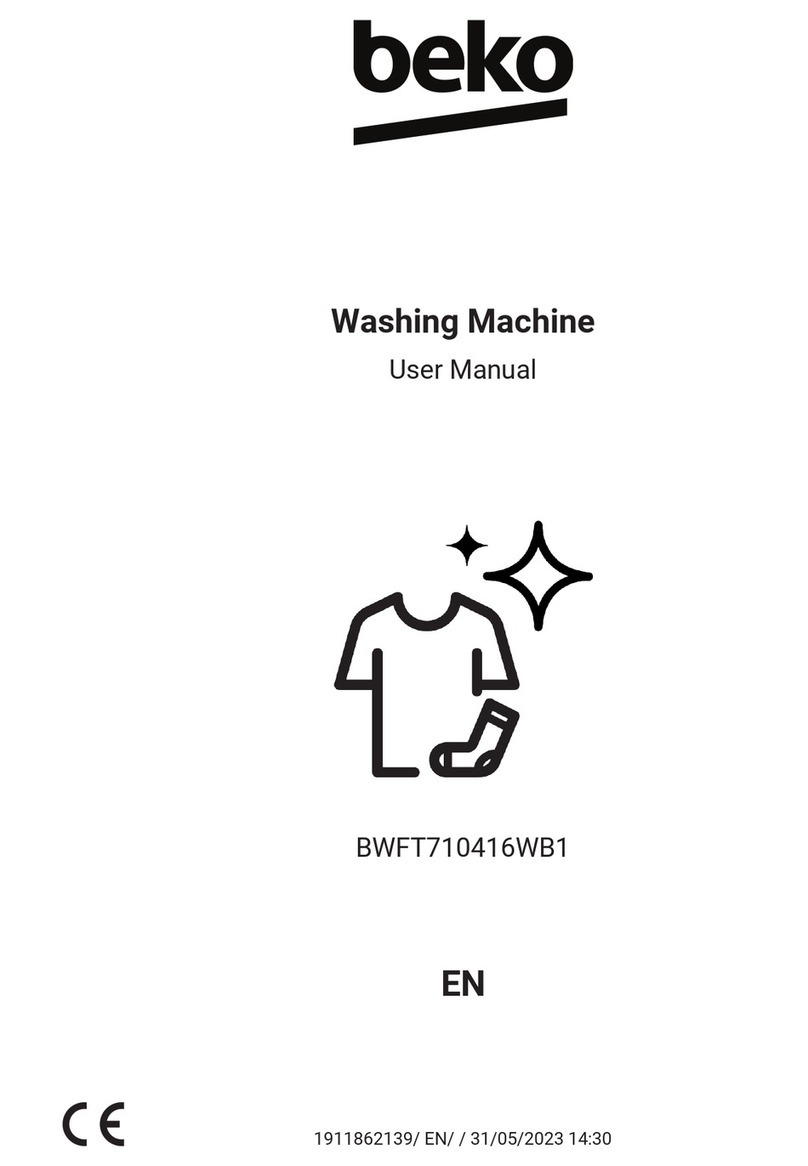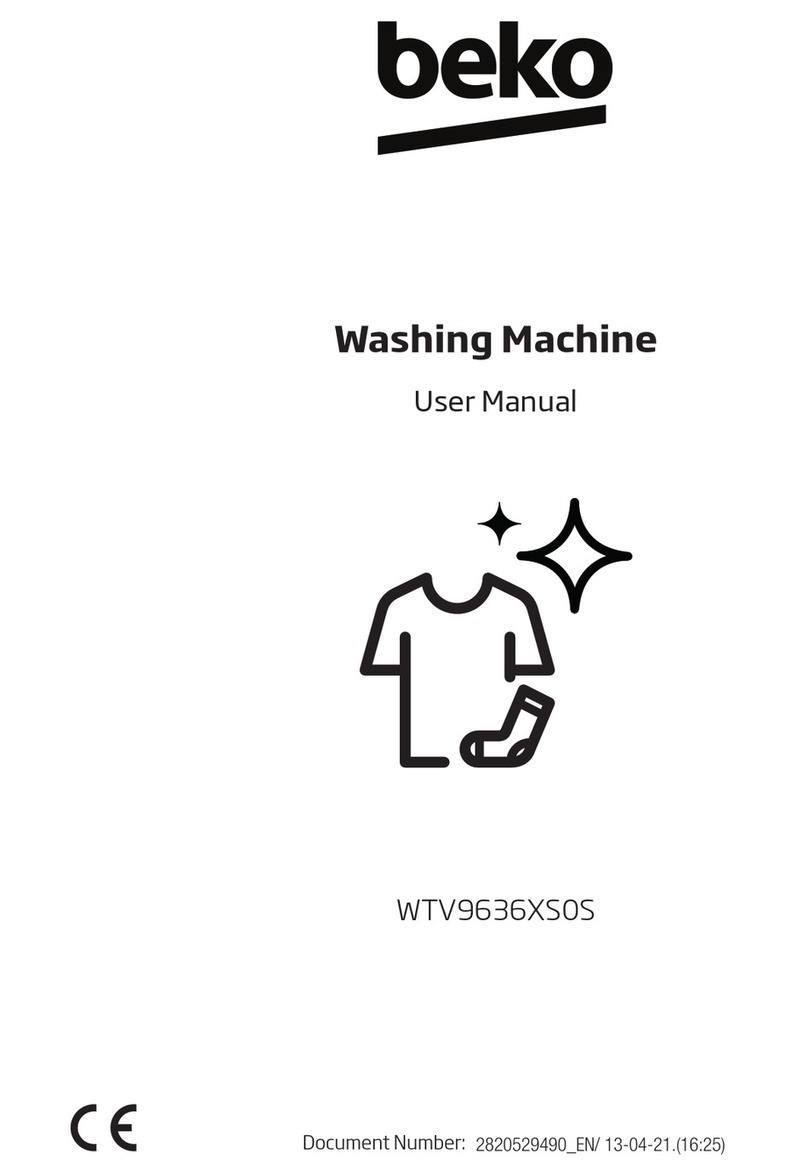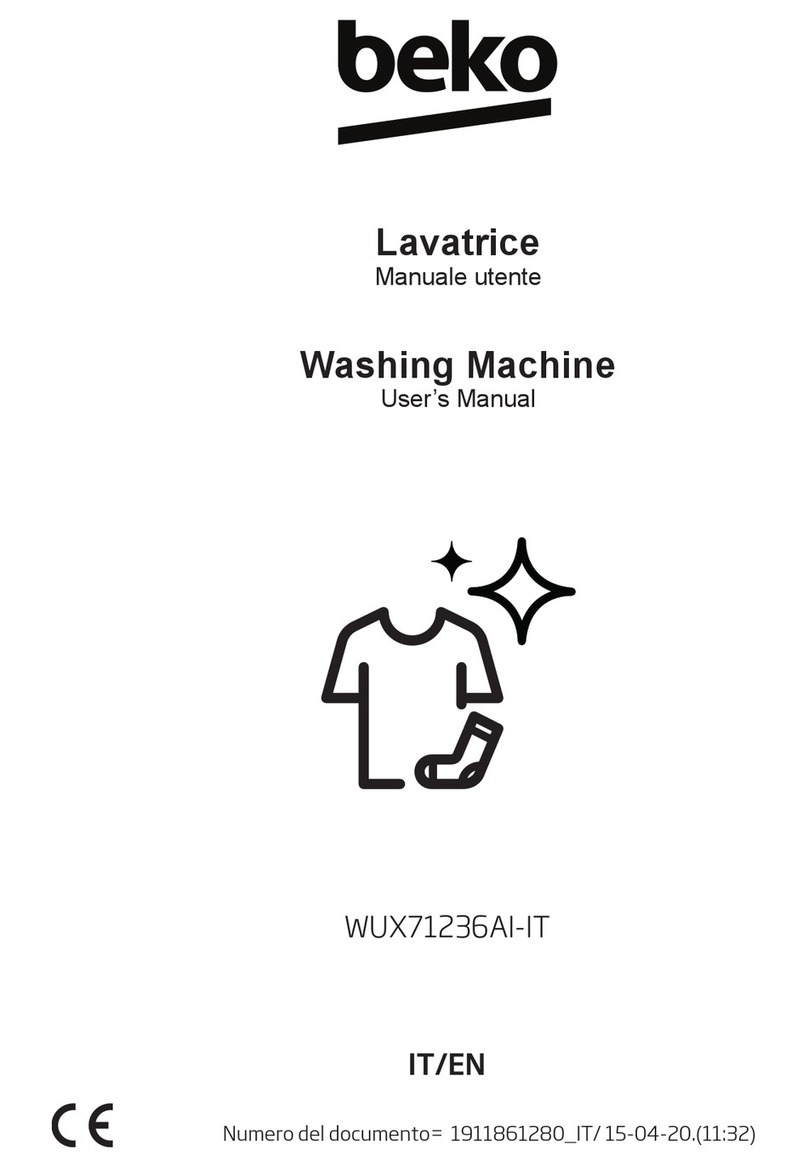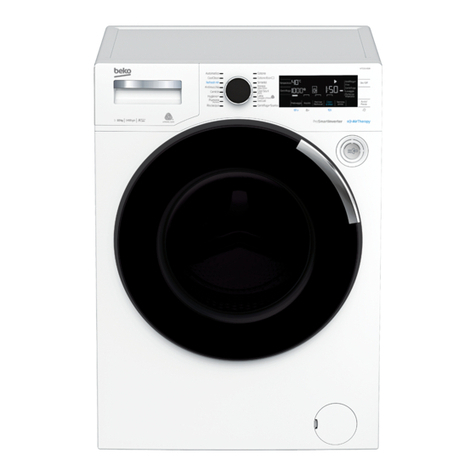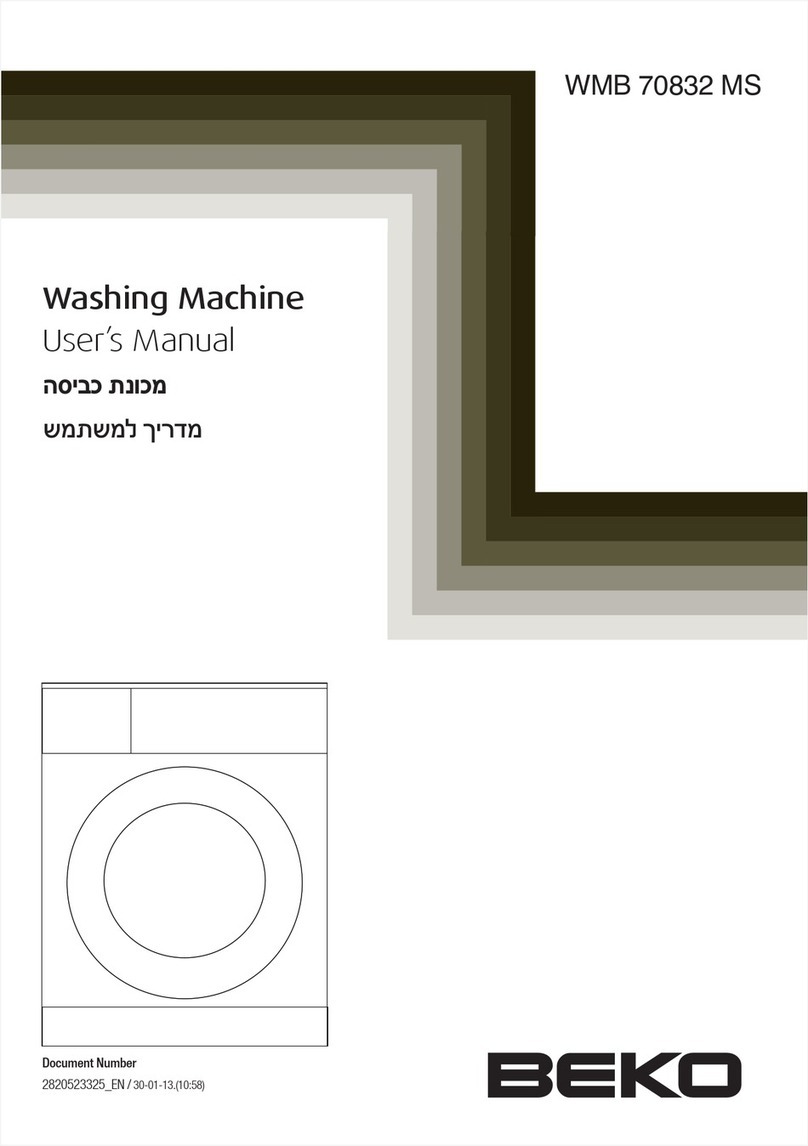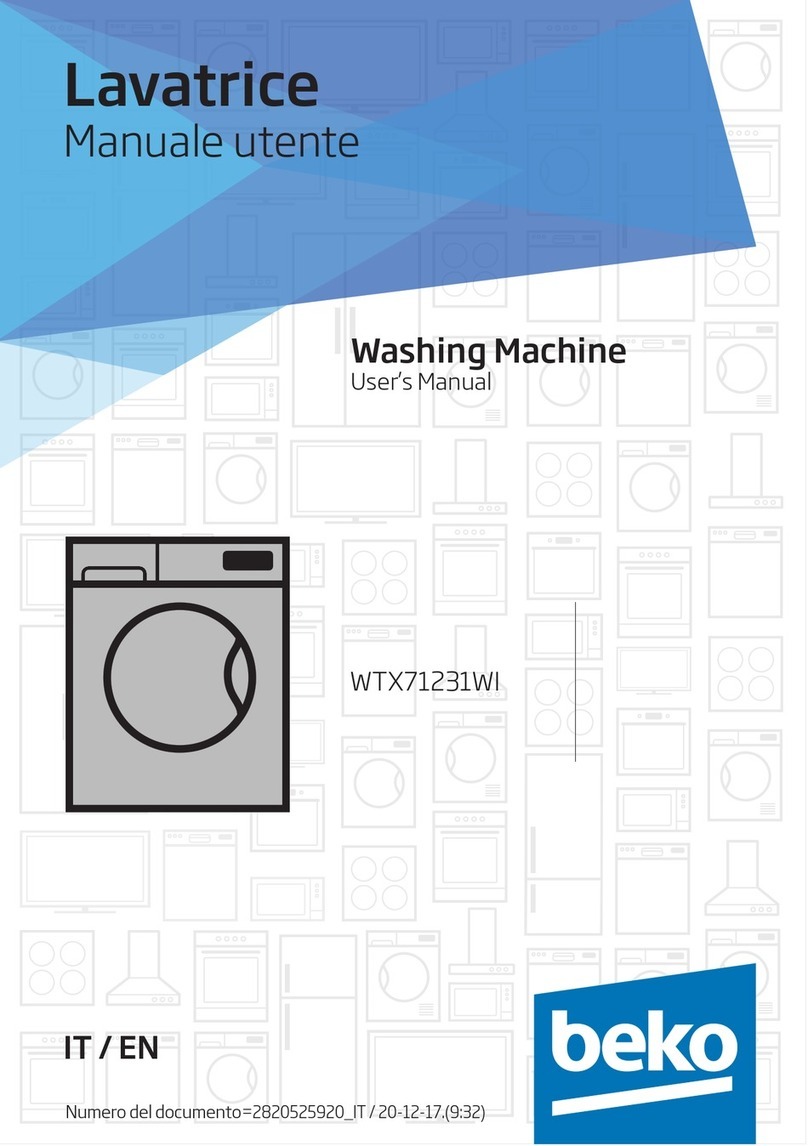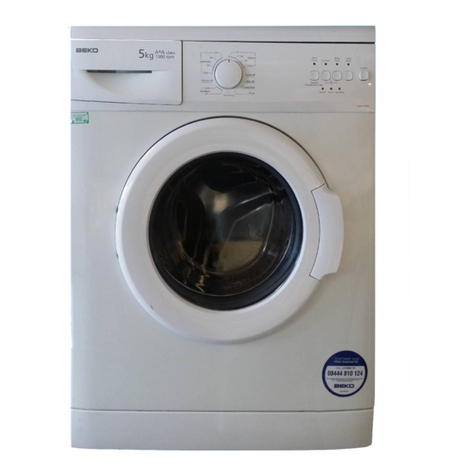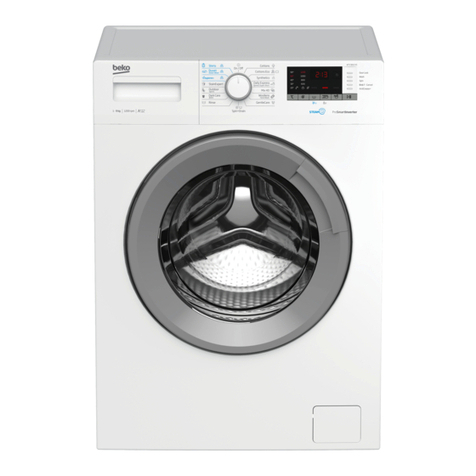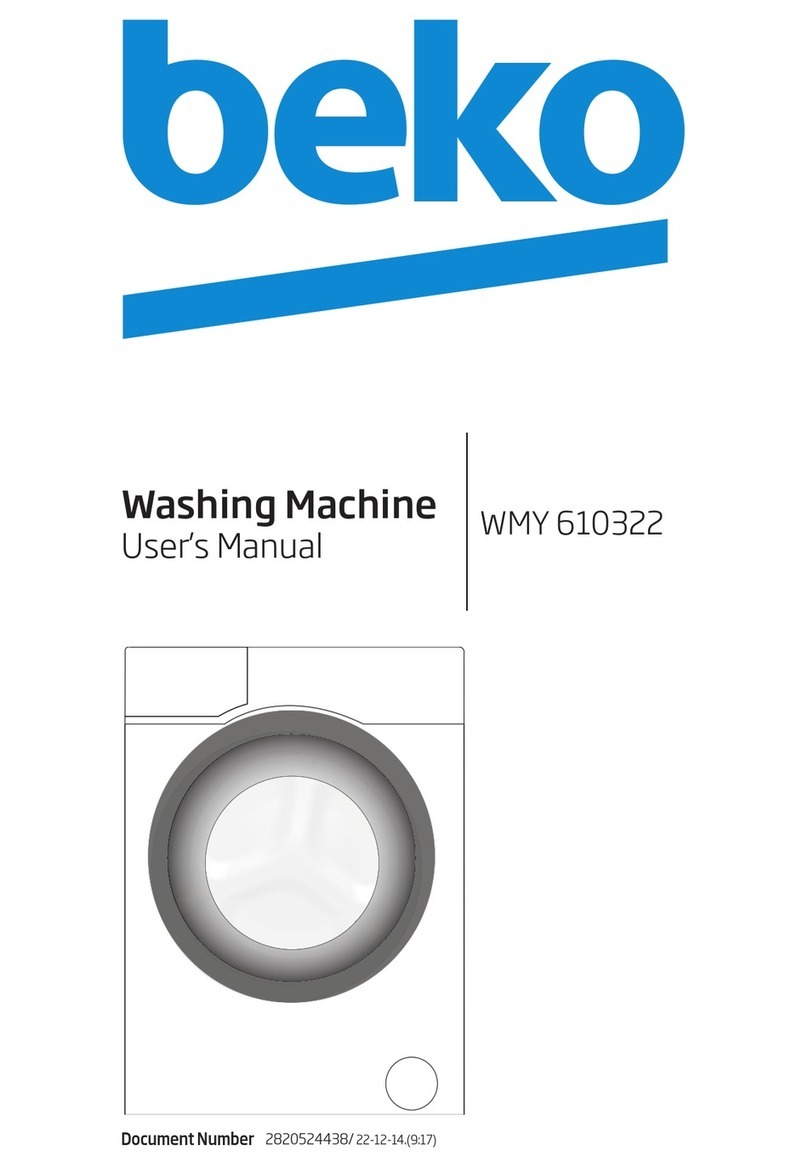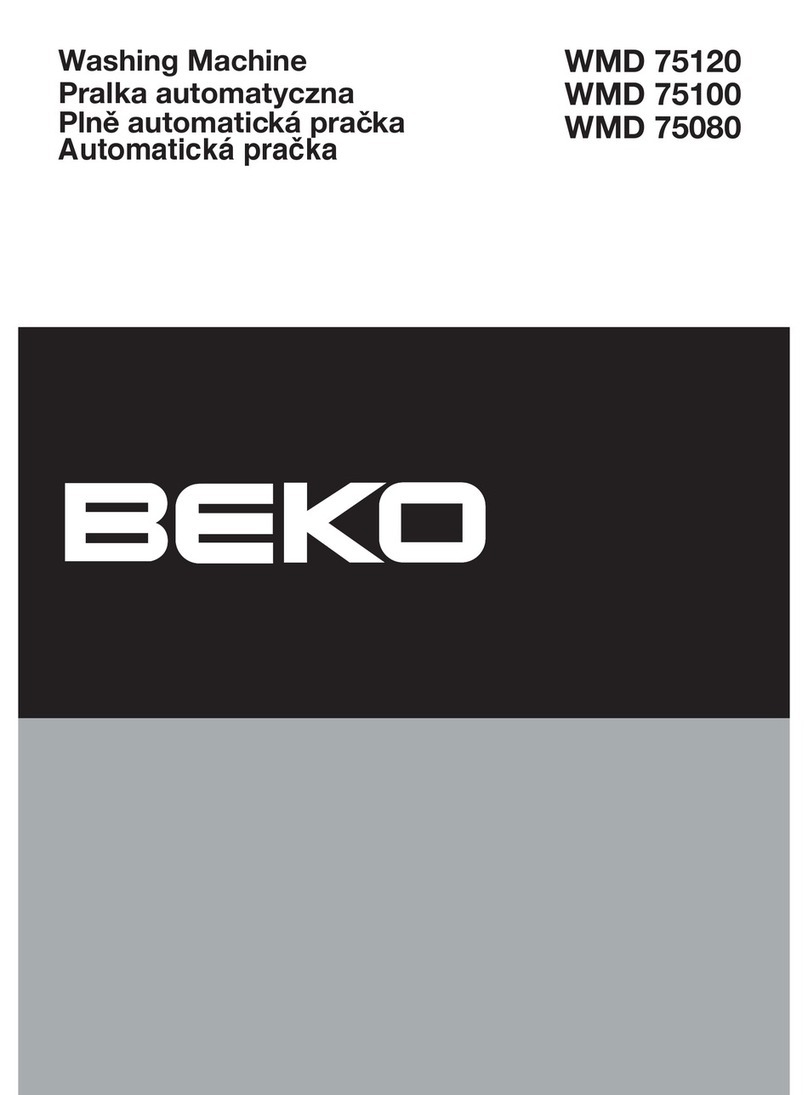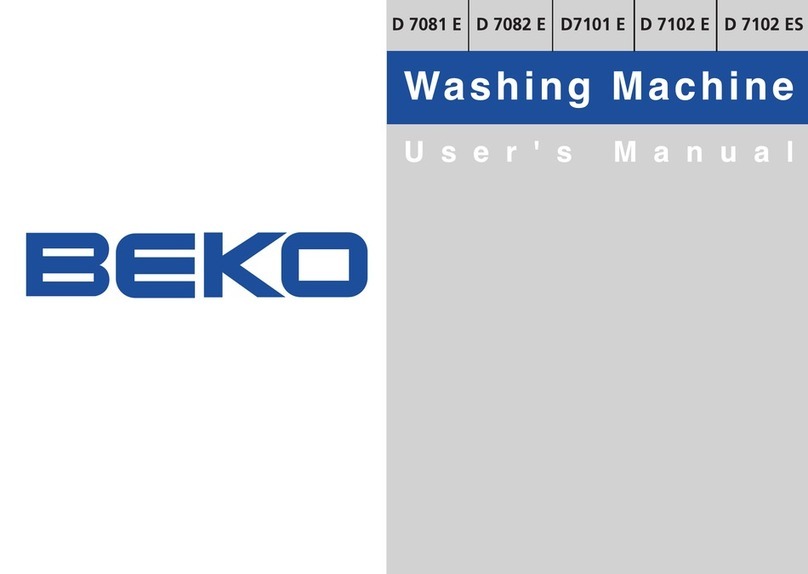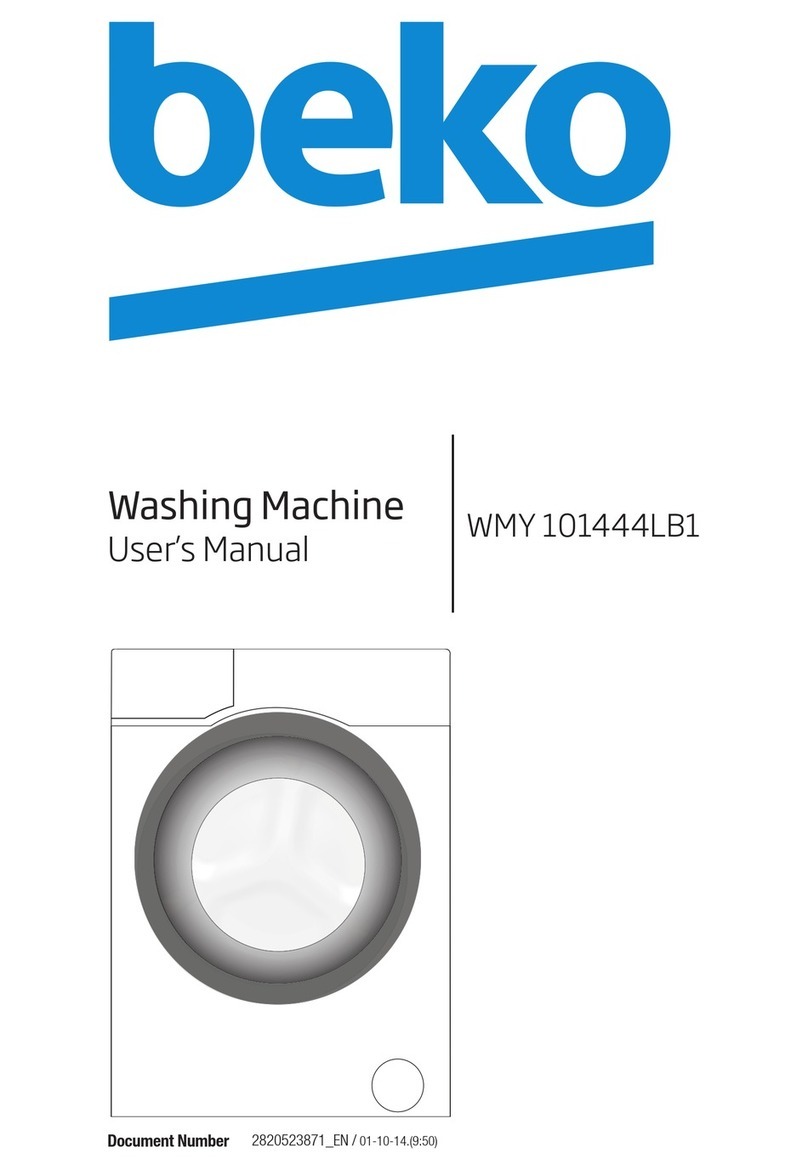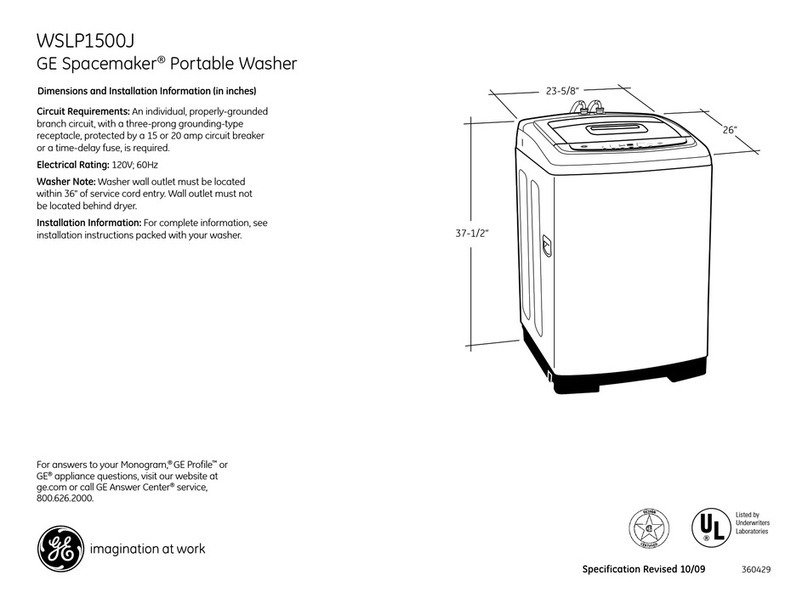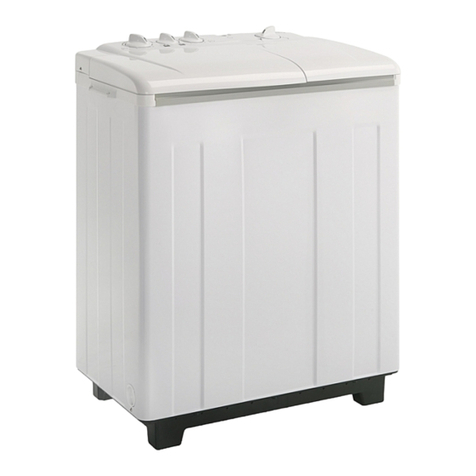3 Preparation
3.1 Sorting the laundry
• Sort laundry according to type of fabric, colour, and
degree of soiling and allowable water temperature.
• Always obey the instructions given on the garment
tags.
3.2 Preparing laundry for washing
• Laundry items with metal attachments such as,
underwired bras, belt buckles or metal buttons will
damage the machine. Remove the metal pieces or
wash the clothes by putting them in a laundry bag or
pillow case.
• Take out all substances in the pockets such as coins,
pens and paper clips, and turn pockets inside out
and brush. Such objects may damage the product or
cause noise problem.
• Put small size clothes such as infant's socks and
nylon stockings in a laundry bag or pillow case.
• Place curtains in without compressing them.
Remove curtain attachment items.
• Fasten zippers, sew loose buttons and mend rips
and tears.
• Wash “machine washable” or “hand washable”
labeled products only with an appropriate
programme.
• Do not wash colours and whites together. New, dark
coloured cottons release a lot of dye. Wash them
separately.
• Tough stains must be treated properly before
washing. If unsure, check with a dry cleaner.
• Use only dyes/colour changers and limescale
removers suitable for machine wash. Always follow
the instructions on the package.
• Wash trousers and delicate laundry turned inside
out.
• Keep laundry items made of Angora wool in the
freezer for a few hours before washing. This will
reduce pilling.
• Laundry that are subjected to materials such as
flour, lime dust, milk powder, etc. intensely must be
shaken off before placing into the machine. Such
dusts and powders on the laundry may build up on
the inner parts of the machine in time and can cause
damage.
3.3 Things to be done for energy saving
Following information will help you use the product in
an ecological and energy-efficient manner.
• Operate the product in the highest capacity allowed
by the programme you have selected, but do not
overload; see, "Programme and consumption table".
• Always follow the instructions on the detergent
packaging.
• Wash slightly soiled laundry at low temperatures.
• Use faster programmes for small quantities of lightly
soiled laundry.
• Do not use prewash and high temperatures for
laundry that is not heavily soiled or stained.
• If you plan to dry your laundry in a dryer, select the
highest spin speed recommended during washing
process.
• Do not use detergent in excess of the amount
recommended on the detergent package.
3.4 Initial use
Before starting to use the product, make sure that
all preparations are made in accordance with the
instructions in sections “Important safety instructions”
and “Installation”.
To prepare the product for washing laundry, perform
first operation in Drum Cleaning programme. If
your product is not equipped with Drum Cleaning
programme, perform the Initial Use procedure in
accordance with the methods described under “5.2
Cleaning the loading door and the drum” section of the
user manual.
C
NOTE :
Use an anti-limescale suitable for the
washing machines.
NOTE :
Some water might have remained in the
product due to the quality control processes in the
production. It is not harmful for the product.
3.5 Correct load capacity
The maximum load capacity depends on the type
of laundry, the degree of soiling and the washing
programme desired.
The machine automatically adjusts the amount of
water according to the weight of the loaded laundry.
A
CAUTION:
Follow the information in the
“Programme and consumption table”. When
overloaded, machine's washing performance will
drop. Moreover, noise and vibration problems may
occur.
3.6 Loading the laundry
1. Open the loading door.
2. Place laundry items loosely into the machine.
3. Push the loading door to close until you hear a
locking sound. Ensure that no items are caught in
the door.
C
NOTE :
The loading door is locked while a
programme is running. The door can only be opened
a while after the programme comes to an end.
A
CAUTION:
In case of misplacing the laundry, noise
and vibration problems may occur in the machine.
3.7 Using detergent and softener
C
NOTE :
When using detergent, softener, starch,
fabric dye, bleach or limescale remover read the
manufacturer's instructions on the package
carefully and follow the suggested dosage values.
Use measuring cup if available.
Detergent Drawer
The detergent drawer is composed of three
compartments:
– (1) for prewash
– (2) for main wash
– (3) for softener
– (*) in addition, there is siphon piece in the softener
compartment.


